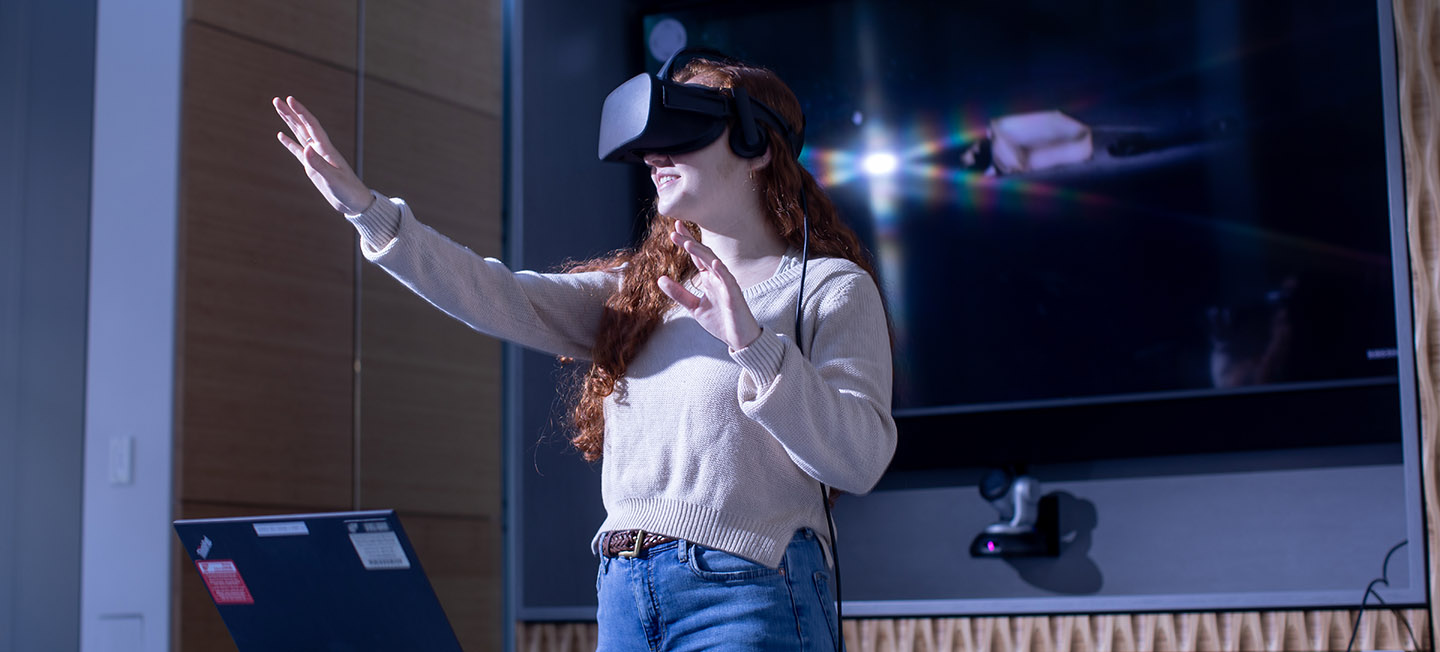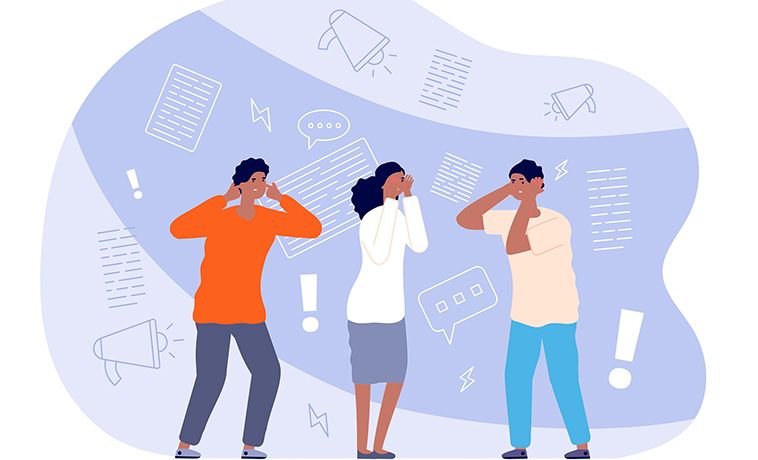New director to build on research center’s long history

With state-of-the art facilities and technologies, the Communication Research Center fosters opportunities for collaboration as well as strengthens and amplifies the expertise and abilities of its research fellows.

From climate change denialism to vaccine refusal, parsing fact from fiction these days is a big job — and one that has been taken up by Michelle Amazeen as the new director of COM’s Communication Research Center (CRC).
Amazeen, an associate professor in COM’s Department of Mass Communication, Advertising and Public Relations at Boston University, follows former co-directors James Cummings and Mina Tsay-Vogel, who established CRC as a leader in areas such as biometric response to digital media.
Amazeen plans to direct some of the focus for the center, created more than six decades ago, to better understand misinformation in the media.
Amazeen is well positioned for the task. She is among the team of international scholars who contributed to The Debunking Handbook 2020, a consensus document summarizing the science of debunking for engaged citizens, policy makers, journalists, and other practitioners. She also is a contributor to The COVID-19 Vaccine Communication Handbook, a practical guide to help fight the spread of misinformation about the COVID-19 vaccines.
Q&A
With Michelle Amazeen
Do you plan to take CRC in a new direction from what it’s done in the past?
In the past, the CRC has essentially been there to support our research fellows, about two dozen of them, and then a dozen graduate student fellows through the use of our facilities, the technologies that we offer, the event programming that we offer. That’s all going to continue, but I’m going to make some slight tweaks so there’s going to be a pivot toward making the work of our fellows more accessible and more visible to external audiences: to policymakers, to journalists, and to regular everyday people, consumers and citizens.
We have some leading experts as our fellows who can offer thought leadership drawing upon their areas of expertise. The fellows work across a broad area of communication research.
The other slight change is that there’s a lot of overlap between the different areas, so we will see if there’s any natural areas of focus within the research that our fellows are doing. There’s several fellows who are working on misinformation in the media and civic engagement, for instance, so this could become a more focused area of research.
COM is home to many practitioner-professors, but there’s also another set of faculty members who are focused on research. From your position leading CRC, what is the role of research at the COM?
One of the roles of research at COM is to inform practice, whether it’s PR, whether it’s advertising, whether it’s marketing communication. Our researchers are developing communication theories, a theory basically being an understanding of how a process works. They’re also developing methods of studying communication, so both of those can inform what practitioners do.
The College of Communication at its inception was originally a college of public relations. Early public relations was not theoretically informed. It was very practice-driven. It was just professionals doing what they termed public relations: communicating with the different publics without really any understanding of what works, and why does it work, and with whom does it work. So as the profession has evolved, it’s advanced because of research into the practice of public relations.
What’s the role of students in the work of CRC?
Students are very involved with the CRC. We have about a dozen graduate student fellows — PhDs as well as some master’s students — so those students are involved in creating research, developing research, administering research.
More broadly, for both graduate as well as undergraduate students there are many opportunities to participate in research our fellows have created. So that could mean participating in online surveys. It could be online experiments. It could be coming into our facility for a focus group. It could be coming into our facility to use virtual reality equipment and being observed, while you’re playing a game, or something like that. So those are all things that students can get involved in.
We may be getting involved with Wikipedia soon. They have a wiki education initiative where some of our students will help us share research and knowledge that the CRC fellows have created. There’s a lot of opportunities for students to get involved.
How does the work of the CRC connect to COM’s recently revamped mission and strategy?
The CRC is all about building understanding through discovery, so research helps us discover how things work in mediated communication, especially as new media emerge. You know, those little gadgets (mobile phones) that we carry around with us all the time didn’t exist 15 or 20 years ago. Same with all the new platforms that are emerging. Nobody had heard of TikTok half a decade ago.
With all these evolutions there are also challenges that have emerged; just a few years ago nobody ever heard of “deep fakes.” And science denialism — that’s increasingly become a huge issue also. So through discovery, CRC fellows can help people understand these evolutions in media and communication.
And all the while, we’re creating more opportunities for our fellows to collaborate with one another and to share ideas. “Oh, I didn’t know you were working on that. What did you think of this or did you know this?” So, opportunities for amplifying the expertise of our fellows.
How did you personally gravitate toward communication research and following the path you did?
I’ve always been kind of a left brain and right brain type person. As a kid I was fairly artistic. I like to draw and that sort of thing, and I think that’s what attracted me in college to study advertising. I enjoyed the creativity.
But in doing research, I learned that you can be creative with research as well, and I was also good with numbers.
I think it was just a serendipitous encounter with a faculty member at University of Illinois at Urbana-Champaign, where I went, and just seeing what she was doing and seeing both the creative side and the analytical side.
Upon graduation from a Master’s program, I went into industry doing marketing research for companies, to study brands and what their customers thought. Then I came to a point where I got a little bit tired of doing research on specific brands and wanted to be able to research things that I was interested in, and that’s kind of what led me back into academia.
Now I’m so excited about this opportunity at COM and with the CRC. I’m so impressed by the work that our CRC fellows are doing, and how their work can address many of the communication challenges we’re experiencing in society. The CRC’s research has never been more important than right now.
This interview has been edited for concision and clarity.


